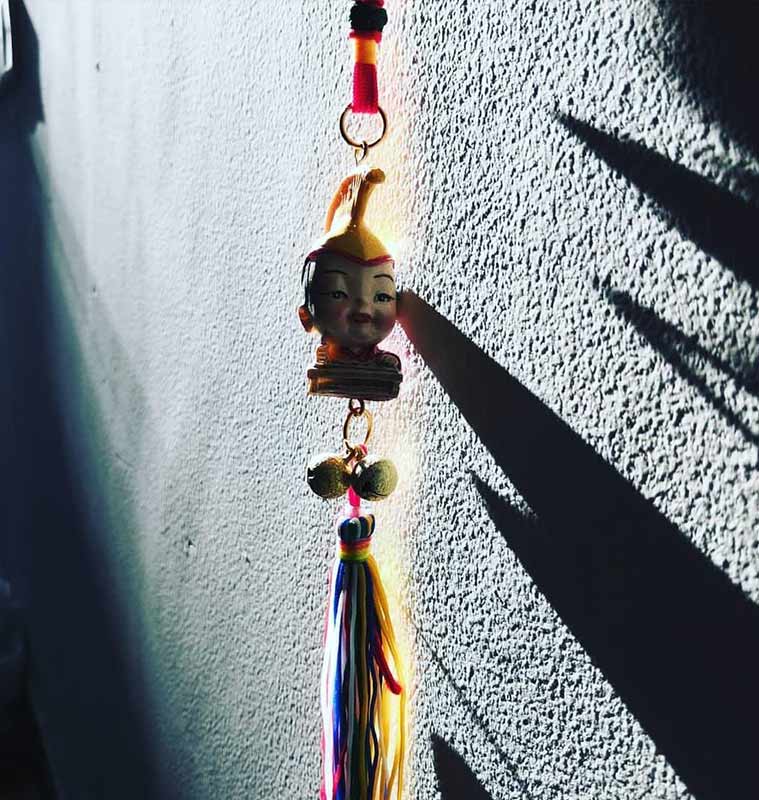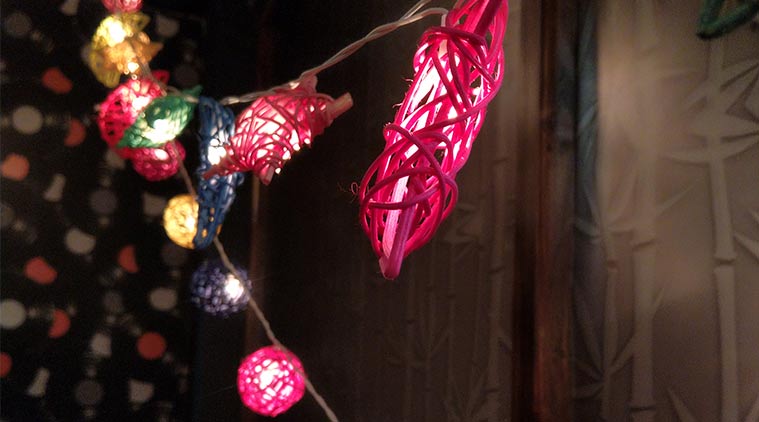How to take good portrait shots in dual camera smartphones
Here are a five simple tips to keep in mind while taking portrait shots with dual-camera smartphones
 Here are a few simple tips that will help you capture better portrait shots on your smartphone
Here are a few simple tips that will help you capture better portrait shots on your smartphone
Smartphone camera technology has improved dramatically over the past decade. While we all love documenting and capturing precious moments thanks to our smartphones, the photographs now showcase more vivid colour and remarkable details.
In the early days, smartphones barely allowed tweaking of any settings. Now, however, the imaging sensors are capable of retaining details even under bad lighting condition. Over the past year or so, several leading smartphones makers have introduced devices incorporating dual camera lens. The second lens in most of these smartphones are designed to capture depth of field and add captivating bokeh effect.
The effect which is commonly termed as ‘Portrait mode’ basically blurs the background and keeps the foreground in focus. With the help of some software efforts, the portrait mode makes the photo appear more stunning than usual. However, the ‘technical aspect of the method’ differs in various smartphones. While most of you might get befuddled on how and when to use this mode, there are a few simple tips that you can check to get the most out of your smartphone camera. In this article, we will try to explain five such simple tricks that will help you to capture good quality still images.
Subject
The first and foremost aspect while shooting photos in Portrait mode is to understand the subject. Not every subject might appear as stunning as you would expect with the bokeh effect. While capturing faces ensure that the subject is comfortable to make the image look more natural. Keep the smartphone slightly higher and provide head space to avoid unwanted contours. Further, to get better output, choose the right background, use frames (grid lines) and play around with composition, in simple words try to take a shot from varied angles.
 The first and foremost aspect while shooting photos in Portrait mode is to understand the subject [Photo shot with Moto G6] (image resized for web)
The first and foremost aspect while shooting photos in Portrait mode is to understand the subject [Photo shot with Moto G6] (image resized for web)
Lighting
Another key aspect of portrait photography is lighting. Even a good subject tends to appear dull if shot in low light condition. Without proper lighting, extra efforts will be needed post-shoot to redeem the picture. For better results, always try to use natural light to make the images appear more lively and bright. During outdoor shoot, the ideal time to get best shots is early morning or an hour before sunset when the soft lighting falls on the subject and adds a mild shadow. Under harsh sunlight try not to make the subject face directly towards the light otherwise, the output might turn out overexposed.
 It is not always necessary to take portrait shots in a horizontal orientation, sometimes landscape mode can also add cinematic effect to an image [Photo shot with Moto G6] (Image resized for web)Always try to keep in note the direction of light and shadows as these are the core elements that accentuate a photo. Further, while capturing images in dimly lit situation try to avoid the flash available in the smartphone as it will rather washout details on the subject. Side directional lighting can also come handy in case you want to add dramatic effect to your photos. However, taking one type of lighting (keylight or backlight) might not always deliver similar output in every situation. It is important to understand the subject that you are capturing and what you want to portray. For this, you need to take a few points under consideration- the subject, the direction of light, how it will fall on the subject and affect shadows, highlights.
It is not always necessary to take portrait shots in a horizontal orientation, sometimes landscape mode can also add cinematic effect to an image [Photo shot with Moto G6] (Image resized for web)Always try to keep in note the direction of light and shadows as these are the core elements that accentuate a photo. Further, while capturing images in dimly lit situation try to avoid the flash available in the smartphone as it will rather washout details on the subject. Side directional lighting can also come handy in case you want to add dramatic effect to your photos. However, taking one type of lighting (keylight or backlight) might not always deliver similar output in every situation. It is important to understand the subject that you are capturing and what you want to portray. For this, you need to take a few points under consideration- the subject, the direction of light, how it will fall on the subject and affect shadows, highlights.
Distance from the subject
Besides dual cameras many smartphones these days come with advanced functionality (in general wide aperture mode) that allows adjusting the level of blur manually. Some smartphones even let you tweak an image in the viewfinder before capturing it. But even when you get the perfect lighting for a subject and brilliant composition, bokeh effect might not help add that artistic touch. In some situation, the Portrait mode fails to accurately detect the outline of a subject (for instance strays of hairs blurred out while capturing faces).
 While taking portraits, ideally, an arm’s length is suitable to get good shots [Photo shot with Oneplus 5T] (Image resized for web)The question arises as to how far should one stand from the subject to get balanced blur effect. Ideally, an arm’s length is suitable to get good portrait shots. But it varies from smartphone to smartphone; since certain devices pack advanced camera software that enables you to adjust depth effect with the output shown in real-time on viewfinder while others feature auto portrait mode that adds blur effect and makes smoothing and brightness adjustments depending on the amount of light.
While taking portraits, ideally, an arm’s length is suitable to get good shots [Photo shot with Oneplus 5T] (Image resized for web)The question arises as to how far should one stand from the subject to get balanced blur effect. Ideally, an arm’s length is suitable to get good portrait shots. But it varies from smartphone to smartphone; since certain devices pack advanced camera software that enables you to adjust depth effect with the output shown in real-time on viewfinder while others feature auto portrait mode that adds blur effect and makes smoothing and brightness adjustments depending on the amount of light.
Focus
Focus is another important element one needs to consider while taking portrait shots. Modern smartphones now integrate Pro mode that allows to adjust focus (ISO, aperture and exposure level as well) manually. Of course, these devices have autofocus but it might not be always helpful since in certain scenario as the mode often fails to apprehend where we want to have focus.
 Modern smartphones now integrate Pro mode that allows adjusting focus (ISO, aperture and exposure level as well) manually [Photo shot with Redmi Note 5 Pro] (Image resized for web)Typically it is recommended to try to focus on a subject’s eyes (in case you are shooting a face) to retain balance in contrast and render sharp details. For this all you need to do is select manual focus in the camera settings and then tap on the face in the viewfinder.
Modern smartphones now integrate Pro mode that allows adjusting focus (ISO, aperture and exposure level as well) manually [Photo shot with Redmi Note 5 Pro] (Image resized for web)Typically it is recommended to try to focus on a subject’s eyes (in case you are shooting a face) to retain balance in contrast and render sharp details. For this all you need to do is select manual focus in the camera settings and then tap on the face in the viewfinder.
Contrast between subject and background
Background has an important impact on the image composition. A photo with a distracting background tends to make it look addled and diverts attention. A good background enhances composition and adds meaning to the story you want to depict with your photo. While capturing faces try to keep the background simple so that the focus directly shifts towards the subject. In case you want to add drama to your photo, contrast between the subject and background can help to delineate effective composition. While composing a subject try for a background that has varying shades and use colours that contrast with your subject to outweigh your image and make it visually appealing.
 A good background enhances composition and adds meaning to the story you want to depict with your photo [Photo shot with OnePlus 5T] (Image resized for web)
A good background enhances composition and adds meaning to the story you want to depict with your photo [Photo shot with OnePlus 5T] (Image resized for web)
Editing
You might have captured great portrait shots with good lighting and contrast, but editing tools might make the image appear much better. There are several apps (Lightroom, Snapseed) available on the Android platform that enables you to sharpen the details, tweak contrast, balance colour, highlights and preset filters to add a unique touch to the photos.







